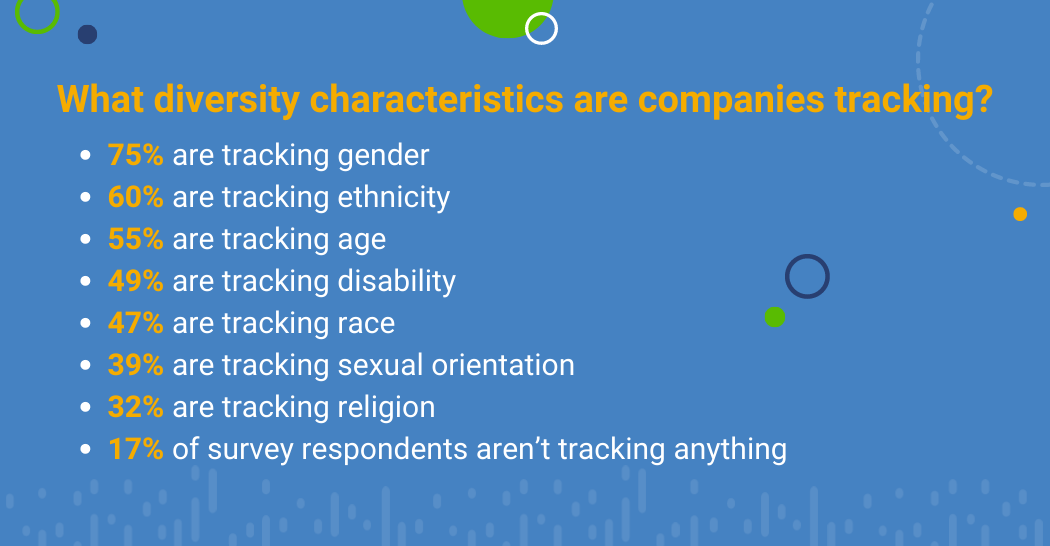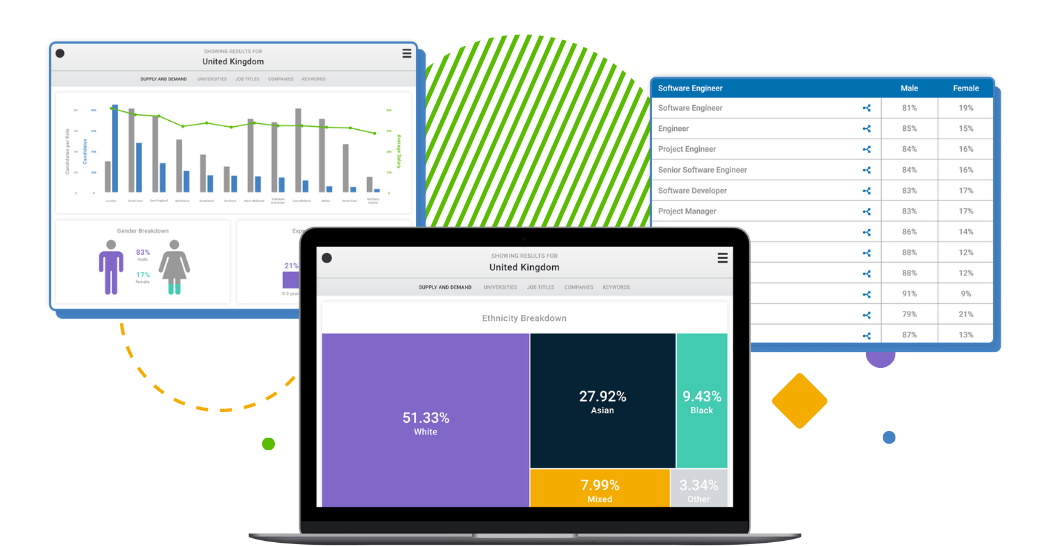Diversity analytics is an emerging topic that employers are using to measure workplace culture, foster inclusivity, and make informed decisions about their organizations. As the business landscape continues to evolve and become increasingly diverse, having a sound understanding of diversity analytics can help ensure that your organization is best equipped to succeed.
These metrics may include the number of applications received from different genders, ethnic backgrounds, and other identities, as well as shortlisted applicants and appointments made. Companies also look at the diversity of their workforce in comparison to their target customer base, industry, or country averages. Data points such as age ranges, job tenure, manager/direct report ratio, and organizational density can help identify areas for improvement with regard to fairness and opportunity within the organization.
So, What is Diversity Analytics?
Simply put, diversity analytics analyzes data around people’s backgrounds, experiences, and perspectives to gain insights into how those elements affect the following areas:
- Hiring
- Promotion opportunities
- Performance reviews
- Retention rates
- And more
Tracking these metrics is integral for ensuring long-term success in achieving workplace diversity objectives. It helps employers identify areas that need additional attention, such as those related to recruitment, promotion, and retention practices—all of which play an important role in closing the existing gap between goals and reality.
Diversity analytics helps employers understand how their company culture affects different minority groups, so they can create strategies for equalizing access to career opportunities and ensuring that everyone is treated fairly.
According to our recent survey (download full survey here), 60% of talent leaders are currently tracking diversity metrics across the organization, while 26% intend to implement diversity metrics in the future. Safe to say, the 14% who are not tracking diversity metrics in hiring might be changing their tune soon.
How to Power Diversity Analytics
There are a few essential steps to measure workplace culture with diversity analytics.
Collect the Information
The first step is collecting data on employee demographics such as gender, race/ethnicity, age, religion, sexual orientation/identity, etc. Companies are increasingly tracking diversity metrics to ensure that their workforce reflects the communities in which they operate. This includes collecting data from various sources, such as HRIS and ATS systems, census tools, self-declaration forms, spreadsheets, Power BI, and custom internal tools. By collecting data on gender, ethnicity, and other aspects of diversity at onboarding and recruitment points, companies can identify gaps in representation and make informed decisions about improving workplace diversity.
Remove Bias Where Possible
The next step would be assessing job descriptions and recruiting materials for potential gender biases or cultural stereotypes that might be present without your knowledge. For example, companies can use CVs from applicants and manually track them through the recruitment process, providing real-time data on their hiring rates and diversity across different roles. A comprehensive overview of recruitment progress can be gained by monitoring each applicant’s journey to ensure that the right people are being hired for the right job. Additionally, HR databases can be used to view employee headcount reports with data on diversity provided at onboarding, allowing organizations to make informed decisions when recruiting employees.
Additionally, looking at pay scales within the organization can reveal any disparities between employees with similar qualifications across different demographic groups.
Create a DEI Plan and Goals
Once you have gathered all this information, it’s time to use it to make informed decisions about how your organization should move forward. You should look at what policies need changing and what resources need investment to promote diversity and inclusion within the company (e.g., training programs for managers on unconscious bias).
Tracking diversity data can help reveal unconscious bias in hiring decisions and workplace dynamics. Employers may use this information to create more inclusive workplaces by providing education on bias awareness, developing effective programs for recruiting diverse talent, or training employees in anti-discrimination workplace practices. Additionally, analytics surrounding diversity data can assist employers in gauging the success of these initiatives over time and making appropriate adjustments as needed.
Analyzing diversity data can provide insight into potential blind spots or areas where existing methods may be missing specific groups of people. This allows employers to make strategic adjustments to guarantee equal opportunity for all workforce members. By creating a more diverse environment that fosters creativity and innovation, companies can enhance the overall employee experience and make their organization more inclusive.

How to Foster a More Diverse Workplace
Organizations can quickly gain an edge over their competition by being better equipped to decide when it's most advantageous to source the perfect candidate. Horsefly's use of longitudinal data has set a new standard for understanding ever-changing recruitment metrics.
How Horsefly Analytics offers a more diverse workforce with Ethnicity Data
- Horsefly Analytics provides up-to-date ethnicity breakdowns for any set of skills, and job titles, in most locations worldwide.
- View the actual ethnicity breakdown for any position, then set appropriate benchmarks for your business.
- In a competitive global job market, demonstrating that your business is invested in creating a diverse company can make you stand out as a suitable candidate.
- Diverse teams are more satisfied with their workplace, increasing retention. Use diversity data to increase employee engagement and ensure to hire underrepresented communities.
- Uses a variety of trusted government sources and combines them with proprietary data to come up with the most accurate ethnicity data available today.
Why You Need Ethnicity Data
Your organization needs ethnicity data because diverse organizations are high-performing ones. In 2017, Boston Consulting Group (BCG) published a study that showed diversity was a driver of innovation. Diverse teams produce 19% more revenue, among other benefits. Workplace diversity also leads to creativity because more diverse teams lead to a myriad of diverse viewpoints, which in turn increases diverse solutions.
By leveraging this data, employers are better equipped to stay up-to-date with current market trends and create a diverse workforce that nurtures creativity and innovation and enhances the overall employee experience. Furthermore, using diversity data offers companies a way of assessing how successful their efforts are with regard to creating a more inclusive environment at all levels within the organization.
Leveraging data analysis on workforce diversity provides employers with the insight they need to build a more equitable workplace environment that welcomes innovation and creativity. With better access to metrics like gender parity or representation from minority groups in leadership positions, companies can measure progress toward their goals while ensuring everyone has an equal opportunity to succeed within the organization.
Set up a free demo to see how Horsefly Analytics can help your organization.
